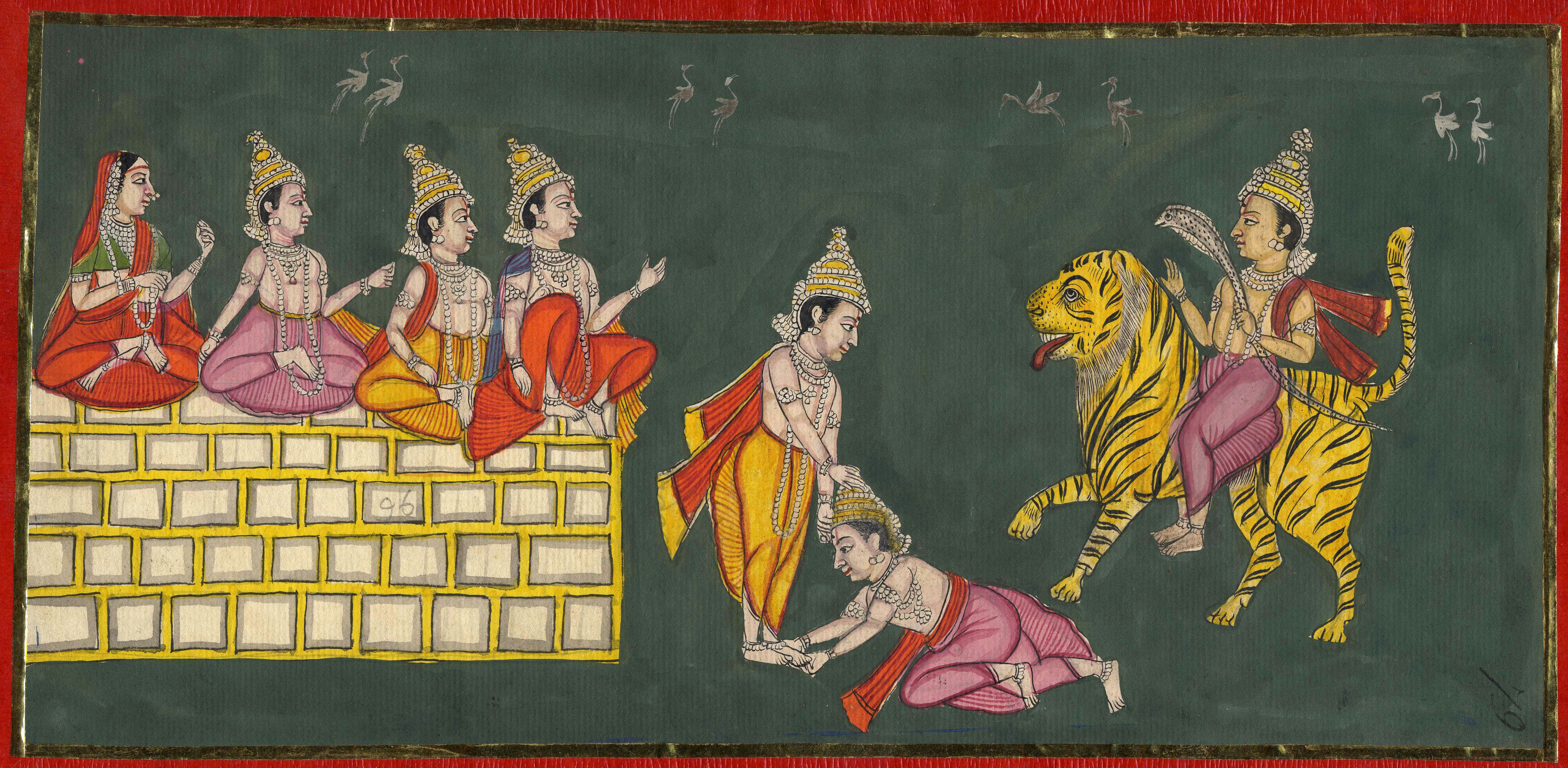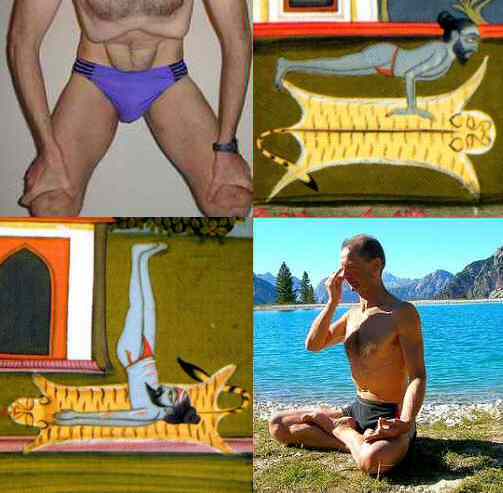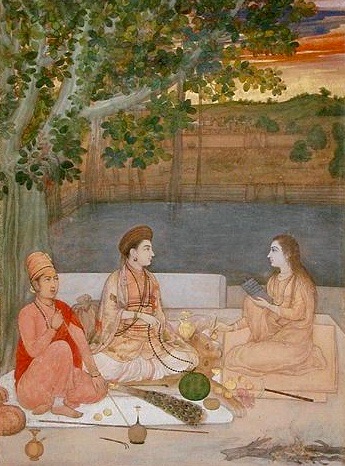|
So Ham
''Soham or Sohum'' ( ') is a Hindu mantra, meaning "I am He/She/That" in Sanskrit.Mariasusai Dhavamony (1999), Hindu Spirituality, GB Press, , page 129 In Vedic philosophy it means identifying oneself with the universe or ultimate reality. The mantra is also inverted from ' (the sandhi of ') to '. The combination of ' has also been interpreted as "I myself am the Swan", where the swan symbolizes the Atman. Etymology An etymology of ' "swan, goose" as from ' "I am that" is found in the 14th century commentary on the Vedas by Sayana (14th century). The term ' is related to , and the phrase translates to "I that very person", according to Monier-Williams. Interpreted as a nominal sentence, it can also be read as "I am She/He" or "It/She/He is I". The term is found in Vedic literature, and is a phrase that identifies "oneself with the universe or ultimate reality". History This phrase is found in Principal Upanishads such as the Isha Upanishad (verse 16), which ends: : (. ... [...More Info...] [...Related Items...] OR: [Wikipedia] [Google] [Baidu] |
Hinduism
Hinduism () is an Indian religion or '' dharma'', a religious and universal order or way of life by which followers abide. As a religion, it is the world's third-largest, with over 1.2–1.35 billion followers, or 15–16% of the global population, known as Hindus. The word ''Hindu'' is an exonym, and while Hinduism has been called the oldest religion in the world, many practitioners refer to their religion as '' Sanātana Dharma'' ( sa, सनातन धर्म, lit='the Eternal Dharma'), a modern usage, which refers to the idea that its origins lie beyond human history, as revealed in the Hindu texts. Another endonym is ''Vaidika dharma'', the dharma related to the Vedas. Hinduism is a diverse system of thought marked by a range of philosophies and shared concepts, rituals, cosmological systems, pilgrimage sites, and shared textual sources that discuss theology, metaphysics, mythology, Vedic yajna, yoga, agamic rituals, and temple building, among other to ... [...More Info...] [...Related Items...] OR: [Wikipedia] [Google] [Baidu] |
Maitreya Upanishad
The Maitreya Upanishad (Sanskrit: मैत्रेय उपनिषत्, IAST: Maitreya Upaniṣad) is one of the minor Upanishads of Hinduism. Composed in Sanskrit, it is one of the 16 Upanishads that belongs to the Samaveda, is classified as one of the 20 Sannyasa Upanishads (Renunciation), and is one of the Vedanta Upanishads. The text is listed at 29 in the serial order in the Muktika enumerated by Rama to Hanuman in the modern era anthology of 108 Upanishads. The Upanishad states that renunciation and self-knowledge is the path to moksha (liberation and spiritual freedom). According to Maitreya, "the Lord is within the heart of each person, he is the witness of the reason's dance, and the object of the utmost love". One must renounce the world, to achieve the rapture of the Self and become one with Brahman. The best renunciation is one, states Maitreya, where one abandons pride, wealth, delusion and lust; when delusion dies in a person, enlightenment is born. In chap ... [...More Info...] [...Related Items...] OR: [Wikipedia] [Google] [Baidu] |
Dnyaneshwar
Sant Dnyaneshwar (Marathi pronunciation: ̪ɲaːn̪eʃʋəɾ, also referred to as Jnaneshwar, Jnanadeva, Dnyandev or Mauli or Dnyaneshwar Vitthal Kulkarni (1275–1296), was a 13th-century Indian Marathi saint, poet, philosopher and yogi of the Nath Shaiva and Varkari tradition. In his short life of 21 years, he authored ''Dnyaneshwari'' (a commentary on the ''Bhagavad Gita'') and ''Amrutanubhav''. These are the oldest surviving literary works in the Marathi language, and considered to be milestones in Marathi literature. Sant Dnyaneshwar's ideas reflect the non-dualistic Advaita Vedanta philosophy and an emphasis on Yoga and bhakti towards Vithoba, an incarnation of Lord Vishnu. His legacy inspired saint-poets such as Eknath and Tukaram, and he is one of the founders of the Varkari (Vithoba-Krishna) Bhakti movement tradition of Hinduism in Maharashtra. Dnyaneshwar undertook samadhi at Alandi in 1296 by entombing himself in an underground chamber. Biography Dnyaneshwar was bo ... [...More Info...] [...Related Items...] OR: [Wikipedia] [Google] [Baidu] |
Gorakshanath
Gorakhnath (also known as Goraksanath, c. early 11th century) was a Hindu yogi, saint who was the influential founder of the Nath Hindu monastic movement in India He is considered one of the two notable disciples of Matsyendranath. His followers, found all over India, are called yogis, ''Gorakhnathi'', ''Darshani'' or ''Kanphata''. He was one of nine saints also known as Navnath and is widely popular in Maharashtra, India. Hagiographies describe him as more than a human teacher and someone outside the laws of time who appeared on earth in different ages. Historians state Gorakhnath lived sometime during the first half of the 2nd millennium CE, but they disagree in which century. Estimates based on archaeology and text range from Briggs' 15th to 12th century to Grierson's estimate of the 14th century. Gorakhnath is considered a ''Maha-yogi'' (or great yogi) in the Hindu tradition. He did not emphasise a specific metaphysical theory or a particular Truth, but emphasised that the ... [...More Info...] [...Related Items...] OR: [Wikipedia] [Google] [Baidu] |
Matsyendranath
Matsyendranātha, also known as Matsyendra, Macchindranāth, Mīnanātha and Minapa (early 10th century) was a saint and yogi in a number of Buddhist and Hindu traditions. He is traditionally considered the revivalist of hatha yoga as well as the author of some of its earliest texts. He is also seen as the founder of the natha ''sampradaya'', having received the teachings from Shiva. He is especially associated with Kaula Shaivism. He is also one of the eighty-four mahasiddhas and considered the guru of Gorakshanath, another important figure in early hatha yoga. He is revered by both Hindus and Buddhists and is sometimes regarded as an incarnation of Avalokiteśvara. Early life Little is known about the life of Matsyendra: he is also called Minanatha and he is also associated with Lui-pa, all of whose names translate as 'Lord of the Fishes'. Legends vary in describing his birthplace. Giuseppe Tucci states, on the authority of two Tibetan works - the ''Siddha'' () and Tarana ... [...More Info...] [...Related Items...] OR: [Wikipedia] [Google] [Baidu] |
Hatha Yoga
Haṭha yoga is a branch of yoga which uses physical techniques to try to preserve and channel the vital force or energy. The Sanskrit word हठ ''haṭha'' literally means "force", alluding to a system of physical techniques. Some haṭha yoga style techniques can be traced back at least to the 1st-century CE, in texts such as the Hindu Sanskrit epics and Buddhism's Pali canon. The oldest dated text so far found to describe haṭha yoga, the 11th-century ''Amṛtasiddhi'', comes from a tantric Buddhist milieu. The oldest texts to use the terminology of ''hatha'' are also Vajrayana Buddhist. Hindu hatha yoga texts appear from the 11th century onwards. Some of the early haṭha yoga texts (11th-13th c.) describe methods to raise and conserve bindu (vital force, that is, semen, and in women ''rajas –'' menstrual fluid). This was seen as the physical essence of life that was constantly dripping down from the head and being lost. Two early Haṭha yoga techniques sought to e ... [...More Info...] [...Related Items...] OR: [Wikipedia] [Google] [Baidu] |
Nath
Nath, also called Natha, are a Shaiva sub-tradition within Hinduism in India and Nepal. A medieval movement, it combined ideas from Buddhism, Shaivism and Yoga traditions in India.Natha: Indian religious sect Encyclopedia Britannica (2007) The Naths have been a confederation of devotees who consider , as their first lord or , with varying lists of additional gurus. Of these, the 9th or 10th century |
Vakya Vritti
''Vakya Vritti'' is a Vedantic textbook, a small treatise, that concerns itself with the detailed and elaborate explanation of two Mahāvākyas – aham brahmāsmi and tat tvam asi which great Sruti sentences are intended to give a direct perception of Brahman. In his ''Laghu vakya vritti'' Adi Shankara deals with the former vakya only. ''Vakya Vritti'' is a text of fifty-two Sanskrit slokas written by Adi Shankara and is in the form of a dialogue between an eager student and an enlightened teacher. There exists a very old commentary on this text but the name of its author is not known. Swami Chinmayananda's commentary on this exhaustive exposition of the Mahavakya Tat Tvam Asi was published in 1981. To explain each mantra as lucidly as a Guru (teacher) can is called Vritti. In ''Vakya Vritti'' a student approaches his Guru with a confession that the subject Mahavakya does not add up to any vivid understanding in his mind, and the teacher patiently elucidates what exactly t ... [...More Info...] [...Related Items...] OR: [Wikipedia] [Google] [Baidu] |
Adi Shankara
Adi Shankara ("first Shankara," to distinguish him from other Shankaras)(8th cent. CE), also called Adi Shankaracharya ( sa, आदि शङ्कर, आदि शङ्कराचार्य, Ādi Śaṅkarācāryaḥ, lit=First Shankaracharya, ), was an Indian Vedic scholar and teacher (''acharya''), whose works present a harmonizing reading of the ''sastras'', with liberating knowledge of the self at its core, synthesizing the Advaita Vedanta teachings of his time. The title of Shankracharya, used by heads of the amnaya monasteries is derived from his name. Due to his later fame, over 300 texts are attributed to his name, including commentaries (''Bhāṣya''), introductory topical expositions (''Prakaraṇa grantha'') and poetry (''Stotra''). However most of these are likely to be by admirers or pretenders or scholars with an eponymous name.W Halbfass (1983), Studies in Kumarila and Sankara, Studien zur Indologie und Iranistik, Monographic 9, Reinbeck Works known ... [...More Info...] [...Related Items...] OR: [Wikipedia] [Google] [Baidu] |
Stotras
''Stotra'' (Sanskrit: स्तोत्र) is a Sanskrit word that means "ode, eulogy or a hymn of praise."Monier Williams, Monier Williams' Sanskrit-English Dictionary, Oxford University Press, Article on 'Stotra'' It is a literary genre of Indian religious texts designed to be melodically sung, in contrast to a ''shastra'' which is composed to be recited. A stotra can be a prayer, a description, or a conversation, but always with a poetic structure. It may be a simple poem expressing praise and personal devotion to a deity for example, or poems with embedded spiritual and philosophical doctrines. Many ''stotra'' hymns praise aspects of the divine, such as Devi, Shiva, or Vishnu. Relating to word "''stuti''", coming from the same Sanskrit root *''stu-'' ("to praise"), and basically both mean "praise". Notable stotras are ''Shiva Tandava Stotram'' in praise of Shiva and ''Rama Raksha Stotra'', a prayer for protection to Rama. Stotras are a type of popular devotional literatur ... [...More Info...] [...Related Items...] OR: [Wikipedia] [Google] [Baidu] |
Tantras
Tantras ("''doctrine''" or "''framework''" or "''system''" ) refers to numerous and varied scriptures pertaining to any of several esoteric traditions rooted in Hindu and Buddhist philosophy. The religious culture of the Tantras is essentially Hindu, and Buddhist Tantric material can be shown to have been derived from Hindu sources. And although Hindu and Buddhist Tantra have many similarities from the outside, they do have some clear distinctions. The rest of this article deals with Hindu Tantra. Buddhist Tantras are described in the article on Buddhist Tantras. Classes of Hindu Tantra The word ''tantra'' is made up by the joining (''sandhi'' in Sanskrit) of two Sanskrit words: ''tanoti'' (expansion) and ''rayati'' (liberation). Tantra means liberation of energy and expansion of consciousness from its gross form. It is a method to expand the mind and liberate the dormant potential energy, and its principles form the basis of all yogic practices. Hence, the Hindu Tantra scriptur ... [...More Info...] [...Related Items...] OR: [Wikipedia] [Google] [Baidu] |
Hamsa Upanishad
The ''Hamsa Upanishad'' ( sa, हंसोपनिषद्) is a Sanskrit text and a minor Upanishad of Hinduism. It is classified as one of the twenty Yoga Upanishads, and attached to the '' Shukla Yajurveda''. The text or parts of the text is a relatively late origin, probably from the 2nd-millennium of the common era, but written before early 17th-century, because Dara Shikoh included it in the Persian translation of the Upanishads as ''Oupanekhat'', spelling it as ''Hensnad'' (Hamsa-nada). The Hamsa Upanishad is structured as a disorganized medley of ideas, in the form of a discourse between Hindu sage Gautama and the divine Sanatkumara, on the knowledge of ''Hamsa-vidya'' as a prelude to Brahmavidya. The text describes the sound of Om, its relation to ''Hamsa'', and how meditating on this prepares one on the journey towards realizing ''Paramahamsa''. Several versions of the Hamsa Upanishad exist, of which the Calcutta and Poona editions have been most studied. The layout ... [...More Info...] [...Related Items...] OR: [Wikipedia] [Google] [Baidu] |



_02.jpg)





